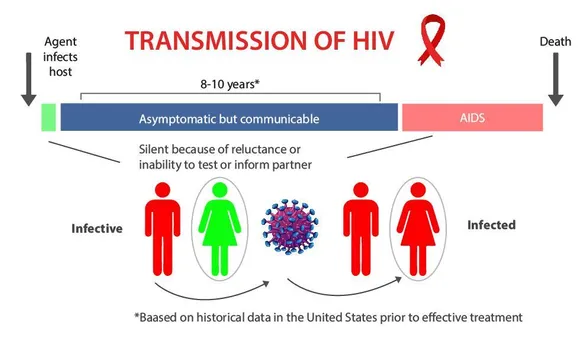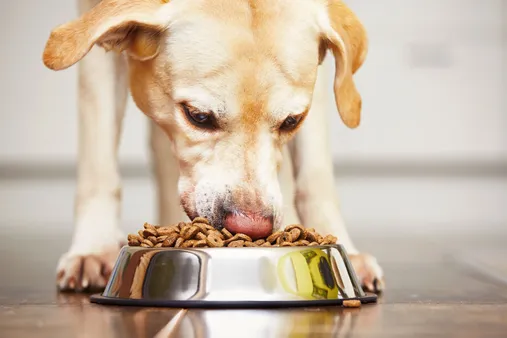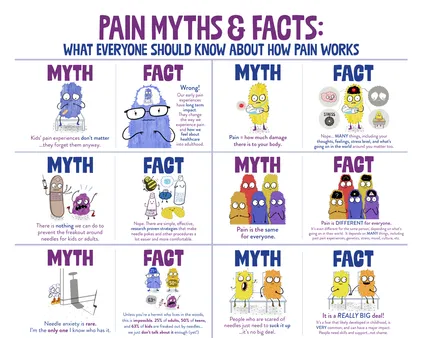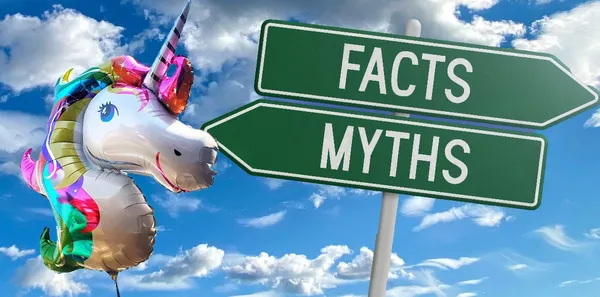Table of Contents
The most common myths and misconceptions about Vietnamese food can prevent people from enjoying this delicious and diverse cuisine. In this article from Tauhui Ichiban, we'll debunk the five most common myths about Vietnamese food, so you can enjoy it without any worries.

The Most Common Myths and Misconceptions About Vietnamese Food
I. Debunking the Myth: Vietnamese Food is Always Spicy
Actually, not all Vietnamese dishes are spicy. There are many popular Vietnamese dishes that have little to no spice, like Pho, Bun Cha, and Banh Xeo. If you're looking for a way to avoid spice when trying Vietnamese food, you can ask your server for recommendations or look for dishes that are labeled as "not spicy" on the menu. [How to make authentic Vietnamese pho](https://tauhuichiban.com.vn/how-to-make-pho/)
While it's true that some Vietnamese dishes can be spicy, there is a fiery kick to it. Many regional favorites, including Pho and Banh Xeo, showcase the delicate balance of sweetness, sourness, saltiness, and umami that Vietnamese cuisine is known for. [The ultimate Vietnamese food quiz](https://tauhuichiban.com.vn/the-ultimate-vietnamese-food-quiz/)
II. Myth 2: Vietnamese Food is Unhealthy
Not true, this a misconception Vietnamese food is not at all unhealthy. In fact, it is quite healthy and can even be considered a part of a balanced diet. Vietnamese cuisine is known for its use of fresh vegetables, herbs, and lean proteins, all of which count toward your daily nutrient needs. [The most popular Vietnamese street foods](https://tauhuichiban.com.vn/the-street-food-and-snacks-of-vietnam/)
Vietnamese food is also low in fat and calories, making it a good choice for those who are watching their weight. Even the rice noodles and rice paper wrappers commonly used in Vietnamese dishes are relatively low in calories and can be included in a healthy diet. [The etiquette and customs of eating Vietnamese food](https://tauhuichiban.com.vn/the-etiquette-and-customs-of-eating-vietnamese-food/)
Healthy Vietnamese Dish | Calories | Fat |
|---|---|---|
Pho | 300-400 | 10-15 grams |
Bun Cha | 400-500 | 15-20 grams |
Banh Xeo | 500-600 | 20-25 grams |
III. Myth 3: Vietnamese Food is All About Pho
Incorrect, while Pho is a popular Vietnamese dish, it is only one of many delicious options to choose from. Vietnamese cuisine is incredibly diverse, with a wide array of regional dishes that vary in flavor and style. Other beloved dishes include Bun Cha, Banh Xeo, and Cha Ca. [The history and culture of Vietnamese food](https://tauhuichiban.com.vn/the-history-and-culture-of-vietnamese-food/)
Each region of Vietnam has its own unique culinary traditions, so be sure to venture out and try different dishes when dining Vietnamese. You're sure to find something that you love. [The most popular Vietnamese desserts and drinks](https://tauhuichiban.com.vn/the-most-popular-vietnamese-desserts-and-drinks/)
IV. Myth 4: Vietnamese Food is Hard to Make
Actually, most of the iconic recipes are easy to make. Vietnamese dishes are relatively easy to make, even for beginners. This makes them a great option for home cooks who want to try something new.
There are many resources available online and in libraries that can teach you how to make Vietnamese food. You can also find Vietnamese cooking classes in most major cities. [The best Vietnamese cookbooks and blogs for learning Vietnamese recipes](https://tauhuichiban.com.vn/the-best-cookbooks-and-blogs-for-learning-vietnamese-recipes/)
V. Myth 5: Vietnamese Food is Not Vegetarian-Friendly
This is not true, Vietnamese food has plenty of options for vegetarians. Vietnamese cuisine has more to offer than meat-based dishes. There are many delicious vegetarian and vegan dishes to choose from due to the prevalence of vegetables, tofu, and other plant-based ingredients.
Some of the most popular vegetarian Vietnamese dishes include Pho Chay (vegetarian Pho), Banh Xeo Chay (vegetarian Banh Xeo), and Cha Ca Chay (vegetarian Cha Ca). [The vegetarian and vegan options in Vietnamese food](https://tauhuichiban.com.vn/the-vegetarian-and-vegan-options-in-vietnamese-food/)

Debunking the Myth: Vietnamese Food is Always Spicy
VI. Dispelling the Misconception: Vietnamese Cuisine is Limited to Pho and Spring Rolls
Vietnamese cuisine is renowned for its diverse and flavorful dishes, but many people mistakenly believe that it is limited to pho and spring rolls. In reality, Vietnamese cuisine encompasses a wide range of regional specialties, each with its own unique flavors and ingredients. From the spicy and sour dishes of the north to the sweet and savory dishes of the south, Vietnamese cuisine has something to offer everyone.
One of the most popular misconceptions about Vietnamese cuisine is that it is all about pho. While pho is certainly a delicious and iconic dish, it is just one of many Vietnamese dishes that are worth trying. Other popular dishes include bun cha, a grilled pork noodle dish, and banh xeo, a crispy pancake filled with shrimp and pork. Read more about pho here
Region | Popular Dishes |
|---|---|
North | Pho, bun cha, cha ca |
Central | Banh xeo, cao lau, mi quang |
South | Hu tieu, com tam, banh canh |
Another misconception about Vietnamese cuisine is that it is all about spring rolls. While spring rolls are a popular appetizer, they are just one of many Vietnamese dishes that are served as appetizers. Other popular appetizers include goi cuon, a fresh spring roll filled with vegetables and shrimp, and cha gio, a fried spring roll filled with pork and vegetables. Read more about goi cuon here
If you are looking to explore the true diversity of Vietnamese cuisine, be sure to venture beyond pho and spring rolls. There are many other delicious and flavorful dishes waiting to be discovered.

Dispelling the Misconception: Vietnamese Cuisine is Limited to Pho and Spring Rolls
VII. Unveiling the Truth: Vietnamese Food is Not Just Street Food
Vietnam is well-known for its rich and flavorful cuisine, and one of the most popular misconceptions is that Vietnamese food is only about street food. While it's true that street food is an important part of Vietnamese culture, there's so much more to Vietnamese cuisine than just food stalls. In this section, we'll explore the diversity of Vietnamese food and dispel the myth that it's limited to street food.
One of the most important things to understand about Vietnamese food is that it varies greatly from region to region. The flavors and ingredients used in northern Vietnamese cooking, for example, are quite different from those used in southern Vietnamese cooking. In the north, dishes tend to be lighter and less spicy, while in the south, they're often bolder and more flavorful. Here's a link for an article about the difference between northern and southern Vietnamese food.
- Pho: Pho is a Vietnamese noodle soup made with beef or chicken broth, rice noodles, and various herbs and vegetables. It is considered the national dish of Vietnam and is enjoyed by people of all ages.
- Banh mi: Banh mi is a Vietnamese sandwich made with a baguette filled with various meats, vegetables, and sauces. It is a popular street food in Vietnam and is also enjoyed as a snack or light meal.
- Goi cuon: Goi cuon are Vietnamese spring rolls made with rice paper, vegetables, and meat or seafood. They are typically served with a dipping sauce.
- Cha gio: Cha gio are Vietnamese egg rolls made with pork, shrimp, vegetables, and rice noodles. They are typically fried until golden brown and served with a dipping sauce.
- Ca phe sua da: Ca phe sua da is Vietnamese iced coffee made with strong coffee and condensed milk. It is a popular drink in Vietnam and is often enjoyed in the afternoon.
In addition to these popular dishes, there are many other delicious and unique foods to be found in Vietnam. Some of these include:
Dish | Description |
|---|---|
Bun cha | A dish made with grilled pork and rice noodles served in a savory broth. |
Cao lau | A dish made with rice noodles, pork, and vegetables served in a rich broth. |
Com tam | A dish made with broken rice, grilled pork, and various toppings. |
Hu tieu | A dish made with rice noodles, pork, and vegetables served in a clear broth. |
My quang | A dish made with rice noodles, pork, and vegetables served in a yellow turmeric broth. |
These are just a few examples of the many delicious and diverse dishes that make up Vietnamese cuisine. So next time you're planning a trip to Vietnam, be sure to explore beyond the street food and experience all that Vietnamese cuisine has to offer.

Unveiling the Truth: Vietnamese Food is Not Just Street Food
VIII. Exposing the Myth: Vietnamese Food is Unhealthy
Vietnamese food is often perceived as being unhealthy, but this is a myth. In fact, Vietnamese food is packed with healthy ingredients and can be a great way to get your daily dose of fruits, vegetables, and whole grains.
One of the healthiest aspects of Vietnamese food is its use of fresh ingredients. Vietnamese dishes are typically made with a variety of fresh vegetables, such as carrots, cucumbers, tomatoes, and leafy greens. These vegetables are packed with vitamins, minerals, and antioxidants, which are essential for good health.
Another healthy aspect of Vietnamese food is its use of lean protein. Vietnamese dishes often feature lean protein sources, such as chicken, fish, and tofu. These proteins are low in fat and calories, and they are a good source of essential amino acids.
Vietnamese food is also a good source of whole grains. Whole grains are a good source of fiber, which is important for digestive health. Fiber can also help to lower cholesterol and blood sugar levels.
Of course, not all Vietnamese food is healthy. Some dishes, such as fried spring rolls and pho, can be high in fat and calories. However, these dishes are not representative of Vietnamese food as a whole. In general, Vietnamese food is a healthy and delicious way to eat.
Healthy Vietnamese Dishes | Unhealthy Vietnamese Dishes |
|---|---|
Pho | Fried spring rolls |
Banh mi | Banh xeo |
Goi cuon | Cha ca |
Here are some tips for making healthy Vietnamese food choices:
- Choose dishes that are made with fresh ingredients.
- Opt for lean protein sources, such as chicken, fish, and tofu.
- Choose dishes that are made with whole grains.
- Limit your intake of fried foods and sugary drinks.
By following these tips, you can enjoy all the flavors of Vietnamese food without sacrificing your health.
Here are some additional tips for making healthy Vietnamese food choices:
- Ask for your food to be steamed or grilled instead of fried.
- Request brown rice instead of white rice.
- Add extra vegetables to your dishes.
- Limit your intake of sauces and condiments.
By following these tips, you can make Vietnamese food even healthier.

Exposing the Myth: Vietnamese Food is Unhealthy
IX. Conclusion
Vietnamese food is a delicious, healthy, and diverse cuisine that is enjoyed by people all over the world. Don't let the myths and misconceptions about Vietnamese food prevent you from enjoying this wonderful cuisine. Get out there and try some Vietnamese food today!